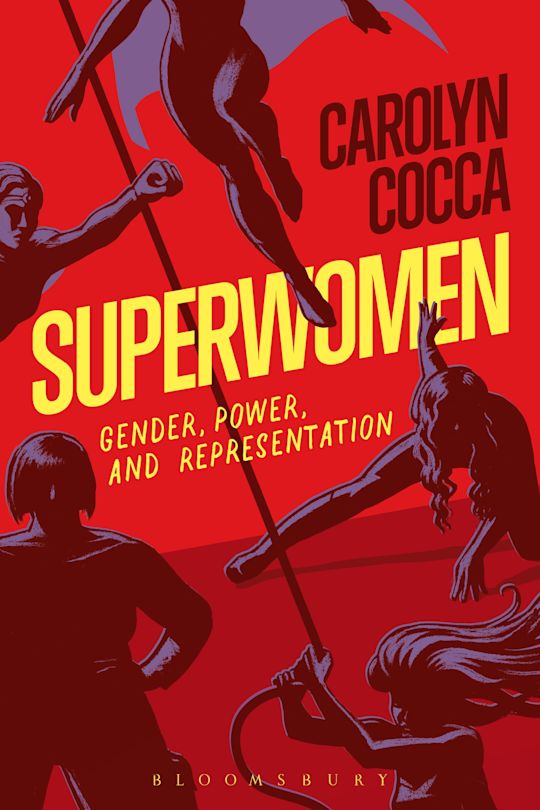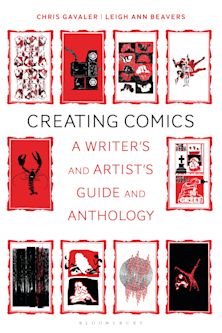- Home
- ACADEMIC
- Literary Studies
- Comics and Graphic Novels
- Superwomen
You must sign in to add this item to your wishlist. Please sign in or create an account
Description
Winner of the 2017 Eisner Award in the Best Academic/Scholarly Work category
2017 Prose Awards Honorable Mention, Media & Cultural Studies
Over the last 75 years, superheroes have been portrayed most often as male, heterosexual, white, and able-bodied. Today, a time when many of these characters are billion-dollar global commodities, there are more female superheroes, more queer superheroes, more superheroes of color, and more disabled superheroes--but not many more.
Superwomen investigates how and why female superhero characters have become more numerous but are still not-at-all close to parity with their male counterparts; how and why they have become a flashpoint for struggles over gender, sexuality, race, and disability; what has changed over time and why in terms of how these characters have been written, drawn, marketed, purchased, read, and reacted to; and how and why representations of superheroes matter, particularly to historically underrepresented and stereotyped groups.
Specifically, the book explores the production, representations, and receptions of prominent transmedia female superheroes from their creation to the present: Wonder Woman; Batgirl and Oracle; Ms. Marvel and Captain Marvel; Buffy the Vampire Slayer; Star Wars' Padmé Amidala, Leia Organa, Jaina Solo, and Rey; and X-Men's Jean Grey, Storm, Kitty Pryde, Rogue, and Mystique. It analyzes their changing portrayals in comics, novels, television shows, and films, as well as how cultural narratives of gender have been negotiated through female superheroes by creators, consumers, and parent companies over the last several decades.
Table of Contents
List of Illustrations
Introduction: Representation Matters
Chapter 1: “The Sexier the Outfit, the Fewer Questions Asked”: Wonder Woman
Chapter 2: “When You Go Out At Night, You Won't Be Alone”: Batgirl(s) and Birds of Prey
Chapter 3: “Somebody Has To Save Our Skins!” Padmé Amidala, Leia Organa, and Jaina Solo in Star Wars
Chapter 4: “No Such Things as Limits”: The X-Women
Chapter 5: “Slayers. Every One of Us”: Buffy the Vampire Slayer
Chapter 6: “Part of Something Bigger”: Ms. Marvel(s) and Captain Marvel(s)
Conclusion: Superwomen, Diversity, and Representation
Bibliography
Index
Product details

| Published | 08 Sep 2016 |
|---|---|
| Format | Ebook (Epub & Mobi) |
| Edition | 1st |
| Extent | 288 |
| ISBN | 9781501316586 |
| Imprint | Bloomsbury Academic |
| Illustrations | 28 mono images |
| Publisher | Bloomsbury Publishing |
About the contributors
Reviews
-
Superwomen is an accessible text that can be enjoyed by both lay and expert readers. It succinctly summarizes the history and issues surrounding some of the most well-known female superheroes while having a robust bibliography and enough theoretical depth to satisfy any popular culture scholar.
ImageTexT
-
Insightful, sometimes depressing or infuriating, always engaging, Superwomen is an excellent addition to the world of superhero criticism.
Fantasy Literature
-
[A] thoughtful and timely book.
Times Literary Supplement
-
It most certainly fills a void as far as research concerning superwomen is concerned, both updating existing canon where characters such as Wonder Woman and Buffy are already extensively covered, but also providing insight with regards characters and texts which haven't been as widely explored such as Captain and Ms Marvel, or Batgirl. I'm certain that Superwomen will inspire future research and spark lots of brilliant discussions- there are plenty of fascinating superwomen in comics, films, cartoons to be explored.
Phd-Girl
-
Brava, Carolyn Cocca! In Superwomen, she delivers a comprehensive (and fascinating) overview of comics and pop culture women heroes, from Wonder Woman and the women of X-Men to Buffy and Princess Leia. Brava again for detailing the worst and the best treatment these characters have received in the hands of writers, artists, and film studios. And a final brava for showing how today, fans' reaction and feedback has influenced the positive representation of their beloved women heroes.
Trina Robbins, author of Pretty in Ink, and editor of Babes in Arms
-
One of the greatest strengths of this work is its nesting of the portrayal of superwomen in multiple contexts to explore how and why female superheroes are portrayed. Not content with textual analysis, Cocca explores the ideology of creators, fan reception, the effect of the movement from one medium to another on the portrayal of characters, and most significantly how the changing methods of distribution have affected who are the readers of these books, how the industry has perceived those readers, and how this has influenced the portrayal of female superheroes. …This is a very important book for comic and gender studies. It will take its place beside the work of Trina Robbins and Lilian Robinson as canonical analyses of female superheroes, and will, no doubt, be the text against which future gender and superhero studies are measured.
Matthew J. Costello, Professor of Political Science, Saint Xavier University, USA

ONLINE RESOURCES
Bloomsbury Collections
This book is available on Bloomsbury Collections where your library has access.



































